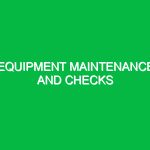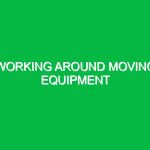In the realm of transportation, the phrase “securing loads” takes on a weighty significance. It refers to the methods and practices used to ensure that cargo remains stable and intact during transit. This is especially critical in the Health, Safety, and Environment (HSE) domain, where the risks associated with improperly secured loads can lead to severe accidents, financial losses, and environmental disasters. Understanding how to secure loads effectively not only protects the cargo but also safeguards the lives of drivers, other road users, and the environment.
Understanding the Importance of Securing Loads for Transportation
Securing loads for transportation is not merely a logistical concern; it is a fundamental aspect of safety management. Every year, thousands of accidents occur as a result of improperly secured loads. According to the Federal Motor Carrier Safety Administration (FMCSA), shifting loads are a leading cause of trucking accidents. The implications extend beyond personal safety—companies can face legal repercussions, financial liabilities, and a damaged reputation if they fail to comply with securing standards.
Moreover, in the HSE domain, the focus is on creating a safer environment for everyone involved in the transport chain. This includes drivers, warehouse staff, and even pedestrians. When loads are secured correctly, the likelihood of accidents decreases, thereby protecting human life and minimizing environmental impacts.
Identifying Hazards and Risks Associated with Securing Loads
When it comes to securing loads for transportation, several hazards and risks need to be acknowledged. These can be categorized into physical risks, legal risks, and environmental risks.
Physical Risks
The most immediate risks associated with securing loads stem from the physical hazards involved. These include:
- Load Shifting: If a load is not secured properly, it can shift during transit, causing instability. This can lead to accidents, especially during sudden stops or sharp turns.
- Falling Cargo: In extreme cases, unsecured loads can fall off the vehicle, endangering other road users and causing severe injuries or fatalities.
- Vehicle Damage: Improperly secured loads can also damage the transporting vehicle, leading to costly repairs and downtime.
Legal Risks
Regulatory compliance is paramount in the transportation industry. Failing to adhere to the laws governing load securing can lead to:
- Fines and Penalties: Organizations can face hefty fines for violations, which can significantly affect their financial standing.
- Litigation: In the event of an accident involving unsecured loads, companies may find themselves embroiled in legal battles, facing lawsuits from affected parties.
Environmental Risks
Improperly secured loads can also pose environmental hazards:
- Spillage: Cargo such as chemicals or hazardous materials can spill onto roads, leading to environmental contamination and necessitating costly cleanup efforts.
- Wildlife Risk: Loads that fall onto roads can harm wildlife and disrupt ecosystems, raising further ethical and legal implications.
Safety Precautions and Best Practices for Securing Loads
To mitigate these risks, it is essential to adopt safety precautions and best practices for securing loads during transportation. Here are some actionable strategies to consider:
1. Understand Load Types and Weight Distribution
Different types of cargo require different securing methods. It is crucial to assess the load type and weight distribution before embarking on transport. For instance, heavy items should be placed at the bottom to lower the center of gravity, while lighter items can be stacked on top. This arrangement helps in maintaining stability.
2. Utilize Proper Securing Equipment
Investing in high-quality securing equipment is non-negotiable. When looking for vehicle parts, such as accessories for Ford Ranger, make sure that they are customised to fit the make and model of the vehicle to ensure optimal performance. This includes:
- Straps and Chains: Use ratchet straps or chains to secure heavy loads. Ensure they are rated for the weight of the cargo.
- Tarps and Covers: For items sensitive to weather conditions, using tarps can protect against moisture and debris.
- Pallets and Dunnage: Employ pallets for stability and dunnage (e.g., foam or wood) to fill gaps and prevent movement.
3. Conduct Regular Inspections
Before setting off, perform a thorough inspection of the load and securing equipment. Check for:
- Signs of wear and tear on straps and chains.
- Proper placement of cargo.
- Any loose items that could shift during transit.
4. Train Personnel
Education and training are critical components of load securing. Ensure that all personnel involved in the loading and unloading process are trained in proper securing techniques. Regular workshops and refresher courses can help reinforce best practices.
5. Monitor Transport Conditions
Weather conditions can greatly affect load security. High winds, rain, or snow can impact how loads are secured. Monitoring these conditions and adjusting securing methods accordingly can prevent accidents.
Regulations and Standards Governing Securing Loads
The transportation industry is heavily regulated to ensure safety and compliance. Several key regulations and standards govern securing loads, including:
- FMCSA Regulations: The Federal Motor Carrier Safety Administration mandates specific guidelines for securing cargo on commercial vehicles.
- OSHA Standards: The Occupational Safety and Health Administration outlines safety standards that include load securing practices to protect workers and other road users.
- ISO Standards: The International Organization for Standardization provides guidelines aimed at ensuring safety and efficiency in logistics, including securing methods.
Conclusion
Securing loads for transportation is a critical aspect of the HSE domain that cannot be overlooked. The risks associated with improper securing practices can lead to severe physical, legal, and environmental consequences. By understanding the hazards, implementing safety precautions, and adhering to regulations, organizations can significantly reduce these risks. Ultimately, a commitment to effective load securing not only enhances safety for drivers and the public but also contributes to a more sustainable and responsible transportation industry.
As someone who has witnessed the devastating effects of unsecured loads firsthand—a near-miss accident involving a falling cargo container during a delivery—I can attest to the importance of prioritizing load security. Each step taken to secure loads is a step towards ensuring safety for everyone on the road.


